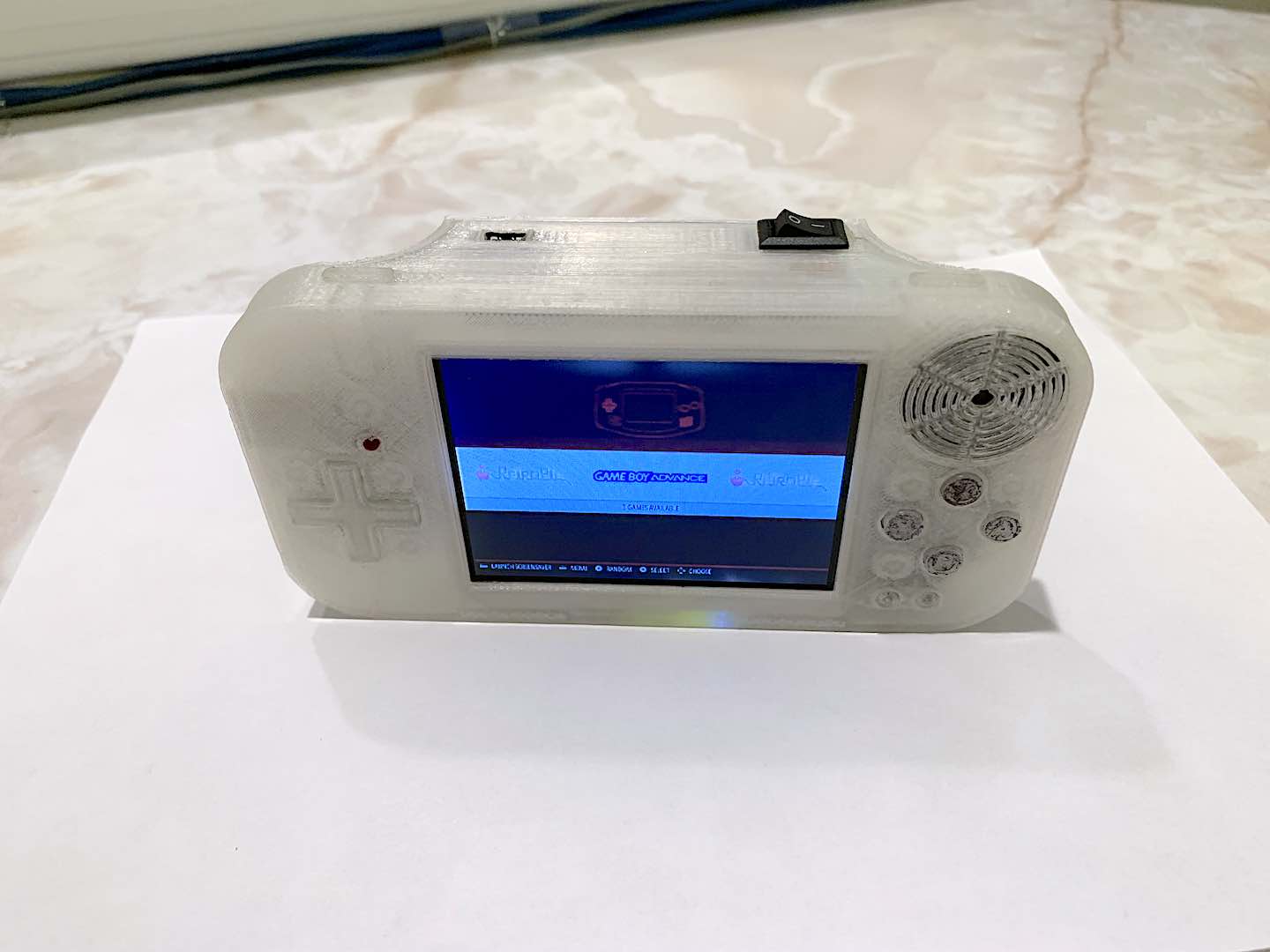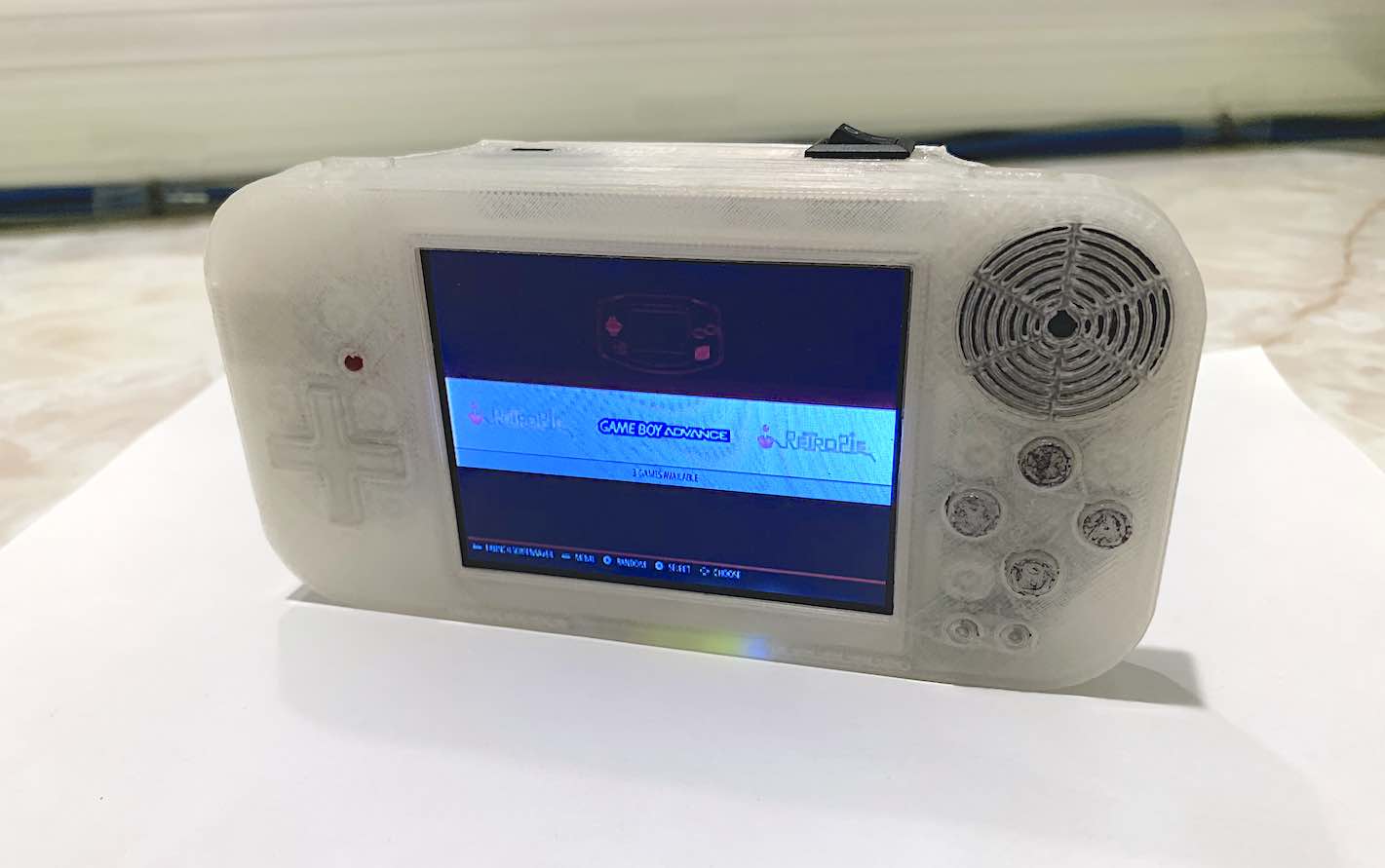Pi Zero Gameboy
Written 8-27-19
Among the many projects for the Pi Zero is a handheld retro gaming console. It was the perfect opportunity to use up the Pi Zero v1.2 (one without the camera connector) that I had in my parts bin. I also had a backup LCD for cars that from my testing was pretty much only useful as a game console display and not any kind of text. With some parts in mind to determine the form factor, I got to designing in Fusion 360.

After printing the parts out, I got to the electronics. I started with soldering the buttons onto some perfboard and drilling the right holes to fit into my design. Then I built a little low battery circuit which if I remember correctly used a couple of transistors. After that I glued the speaker in place along with the Pi Zero, LCD, and battery. Then I soldered wires from each button to the Pi, following the wiring diagram of the PiGRRL Zero.
One issue I ran into was the fact that I didn’t have a 5v boost circuit to power the Pi off a Li-ion. Since I didn’t really have time to wait for the part to come in, I decided to try powering the Pi’s 5v line directly off the Li-ion. To my surprise, it actually worked perfectly. The USB flash drive, keyboard, mouse, and LCD all worked just fine. While my method is usable, I would definitely just buy a boost circuit in the future to be sure of the long term reliability.
Finally, I installed the software which was a really straightforward process. I just followed the instructions on Adafruit’s PiGRRL Zero. Audio isn’t enabled by default, so I followed Adafruit’s Pi Zero PWM Audio instructions.




At the end of the day, I had a functional and fun Pi Zero Gameboy. The Gameboy was the oldest console I ever had, so I get the most nostalgia playing games from that era.





Comments